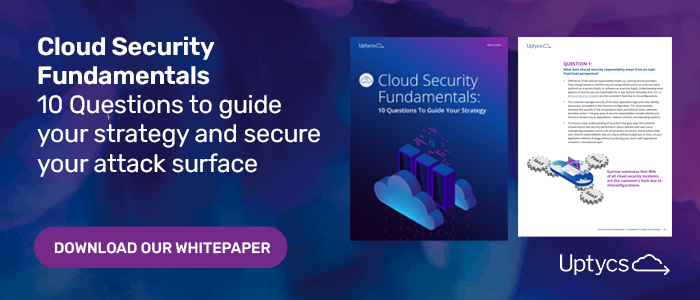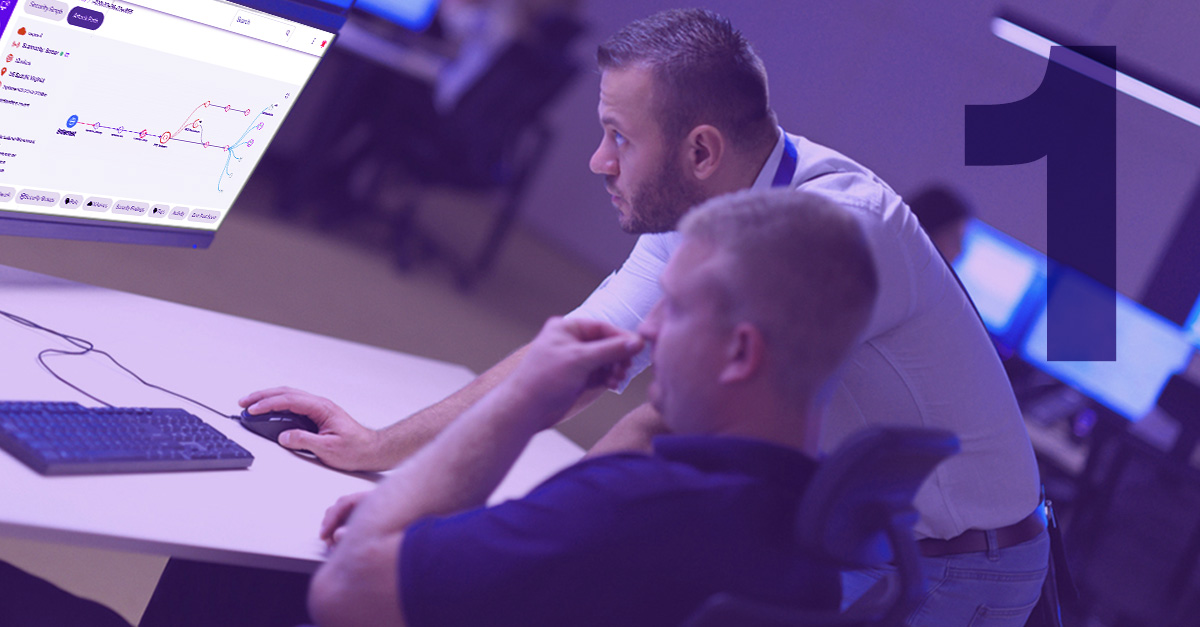
For many security-conscious businesses looking for a SaaS provider, SOC 2 compliance is a minimal requirement. Unfortunately, many providers aren't sure how to implement SOC 2 compliance requirements, as they are inherently vague.
In this article, we'll find out what SOC 2 is, and explain the essential compliance requirements so your business can do what's needed to build trust with auditors and clients alike.
What Is SOC 2 Compliance?
Service Organization Control (SOC) 2 is a set of compliance requirements and auditing processes targeted for third-party service providers. It was developed to help companies determine whether their business partners and vendors can securely manage data and protect the interests and privacy of their clients.
SOC 2 was developed by the American Institute of Certified Public Accountants (AICPA). Within its procedures, there are two types of SOC 2 reports:
- SOC 2 Type 1 details the systems and controls you have in place for security compliance. Auditors check for proof and verify whether you meet the relevant trust principles. Think of it as a point-in-time verification of controls.
- SOC 2 Type 2 assesses how effective your processes are in providing the desired level of data security and management over a period of time.
What Are the Essential SOC 2 Compliance Requirements?
SOC 2 compliance is based on specific criteria for managing customer data correctly, which consists of five Trust Services Categories: security, availability, processing integrity, confidentiality, and privacy.
Security is the baseline for compliance, which consists of broad criteria that is common to all five trust service categories.
The security principle focuses on the protection of the assets and data of the service in scope for compliance against unauthorized use. You can implement access controls to prevent malicious attacks or unauthorized removal of data, misuse of company software, unsanctioned alterations, or disclosure of company information.
When it comes to security, the most basic SOC 2 compliance checklist (which will satisfy an auditor) is detailed in the Trust Services Criteria document for Security, Availability, Processing Integrity, Confidentiality, and Privacy, and should address these controls:
- Logical and physical access controls - How you restrict and manage logical and physical access, to prevent any unauthorized access
- System operations - How you manage your system operations to detect and mitigate deviations from set procedures
- Change management - How you implement a controlled change management process and prevent unauthorized changes
- Risk mitigation - How you identify and develop risk mitigation activities when dealing with business disruptions and the use of any vendor services
Some SOC 2 criteria are very broad and more policy-driven, whereas some are technical—but even the technical criteria won't tell you exactly what you need to do. As such, SOC 2 criteria are somewhat open to interpretation. It is up to each company to achieve the goal of each criterion by implementing various controls. The Trust Services Criteria document includes various “points of focus” to guide you.
For example, to meet the criteria for Logical and Physical Access Controls, one company may implement new onboarding processes, two-factor authentication, and systems to prevent the downloading of customer data when performing support, while another may restrict access to data centers, conduct quarterly reviews of permissions, and strictly audit what is done on production systems. No combination is perfect, or even specifically required. What is required is to achieve the end state desired by the criteria.
When you address the aforementioned common criteria, you cover the security principles, which is the minimum requirement to become SOC 2 compliant.
What Are the Other SOC 2 Compliance Requirements?
With security covered, you should be able to attract business. However, if you operate in the finance or banking sector—or any industry where privacy and confidentiality is paramount—then you need to achieve a higher standard of compliance.
Many companies look for vendors that are fully compliant, as it instills trust and demonstrates a commitment to minimizing risk. You can go beyond the basic security principles to gain compliance for additional criteria in the other trust services categories below.
1. Availability
The availability principle focuses on the accessibility of your system, in that you monitor and maintain your infrastructure, software, and data to ensure you have the processing capacity and system components needed to meet your business objectives.
Compliance requirements for SOC 2 in this category include:
- Measure current usage - Establish a baseline for capacity management, which you can use to evaluate the risk of impaired availability resulting from capacity constraints.
- Identify environmental threats - Assess environmental threats that may impact system availability, such as adverse weather, fire, power cuts, or failure of environmental control systems.
2. Processing Integrity
The processing integrity principle focuses on delivering the right data at the right price at the right time. Data processing should not only be timely and accurate, but it should also be valid and authorized.
Compliance requirements for SOC 2 in this category include:
- Create and maintain records of system inputs - Compile accurate records of system input activities.
- Defines processing activities - Define processing activities to ensure products or services meet specifications.
3. Confidentiality
The confidentiality principle focuses on restricting access and disclosure of private data so that only specific people or organizations can view it. Confidential data may include sensitive financial information, business plans, customer data in general, or intellectual property.
Compliance requirements for SOC 2 in this category include:
- Identify confidential information - Implement procedures to identify confidential information when it is received or created, and determine how long it should be retained.
- Destroy confidential information - Implement procedures to erase confidential information after it is identified for destruction.
4. Privacy
The privacy principle focuses on the system's adherence to the client's privacy policies and the generally accepted privacy principles (GAPP) from the AICPA. This category of SOC considers methods used to collect, use, and retain personal information, as well as the process for disclosure and disposal of data.
Compliance requirements for SOC 2 in this category include:
- Use clear and conspicuous language - The language in the company's privacy notice is clear and coherent, leaving no room for misinterpretation.
- Collect information from reliable sources - The company confirms third-party data sources are reliable and operates its data collection process fairly and legally.
Can You Use Software to Fast-track SOC 2 Compliance?
SOC 2 is primarily focused on policies and processes, rather than technical tasks. Therefore, there is no dedicated, automated tool that can quickly make your enterprise SOC 2 compliant.
Since SOC 2 requirements are not prescriptive, you should devise processes and tight controls for compliance, and then use tools that make it easy to implement the controls.(Tweet this!)
This way, you will have a system that monitors and alerts you whenever a specific technical control fails.
For instance, say one of your controls intends to limit access to Linux systems to a few specific administrators. You can use a tool to track and retrieve the status of permissions on a system in real-time.
For every control that you implement, think of the evidence you would present to an auditor. Remember that having a control is only part of the compliance requirements—you also need to be able to demonstrate that it is working effectively.
How Uptycs Can Help You Become SOC 2 Compliant
Uptycs is an osquery-powered security analytics solution that helps you with audit and compliance, as you can:
- Track the configuration status and the network activity at the host level for workstations and server endpoints, as well as monitor activity across your Amazon Web Services.
- Retrieve information about your IT assets for your SOC 2 audit. For example, you can use Uptycs to analyze network activity on your systems to ensure your firewall is acting as expected.
- Perform file integrity monitoring to implement segregation of duty and to detect if this is violated. For instance, if someone with server access permission turns off encryptions on a database, you can track this in near real-time.
Additionally, with its built-in threat intelligence data, Uptycs acts as an intrusion detection system for Mac, Linux, and Windows, allowing you to leverage the tool itself as one of your SOC 2 controls.
To read more about Cloud Security and Best Practices, check out our Cloud Security and Fundamentals eBook
Photo by Paweł Czerwiński on Unsplash




![mastering-kubernetes-container-s[1]](https://www.uptycs.com/hs-fs/hubfs/mastering-kubernetes-container-s%5B1%5D.jpg?width=400&height=209&name=mastering-kubernetes-container-s%5B1%5D.jpg)
![kevin-paige-ciso-cybersecurity-standup-podcast[1]](https://www.uptycs.com/hs-fs/hubfs/kevin-paige-ciso-cybersecurity-standup-podcast%5B1%5D.jpg?width=400&height=209&name=kevin-paige-ciso-cybersecurity-standup-podcast%5B1%5D.jpg)